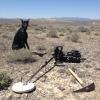Ambient Noise Temography.
-
Similar Content
-
- 10 replies
- 1,270 views
-
- 15 replies
- 2,147 views
-
- 6 replies
- 1,476 views
-
- 9 replies
- 1,612 views
-
- 9 replies
- 1,350 views
-
- 2 replies
- 1,183 views
-
-




.thumb.jpg.95344db3aeef0a4c6c73420daa366191.jpg)




Recommended Posts
Create an account or sign in to comment
You need to be a member in order to leave a comment
Create an account
Sign up for a new account in our community. It's easy!
Register a new accountSign in
Already have an account? Sign in here.
Sign In Now